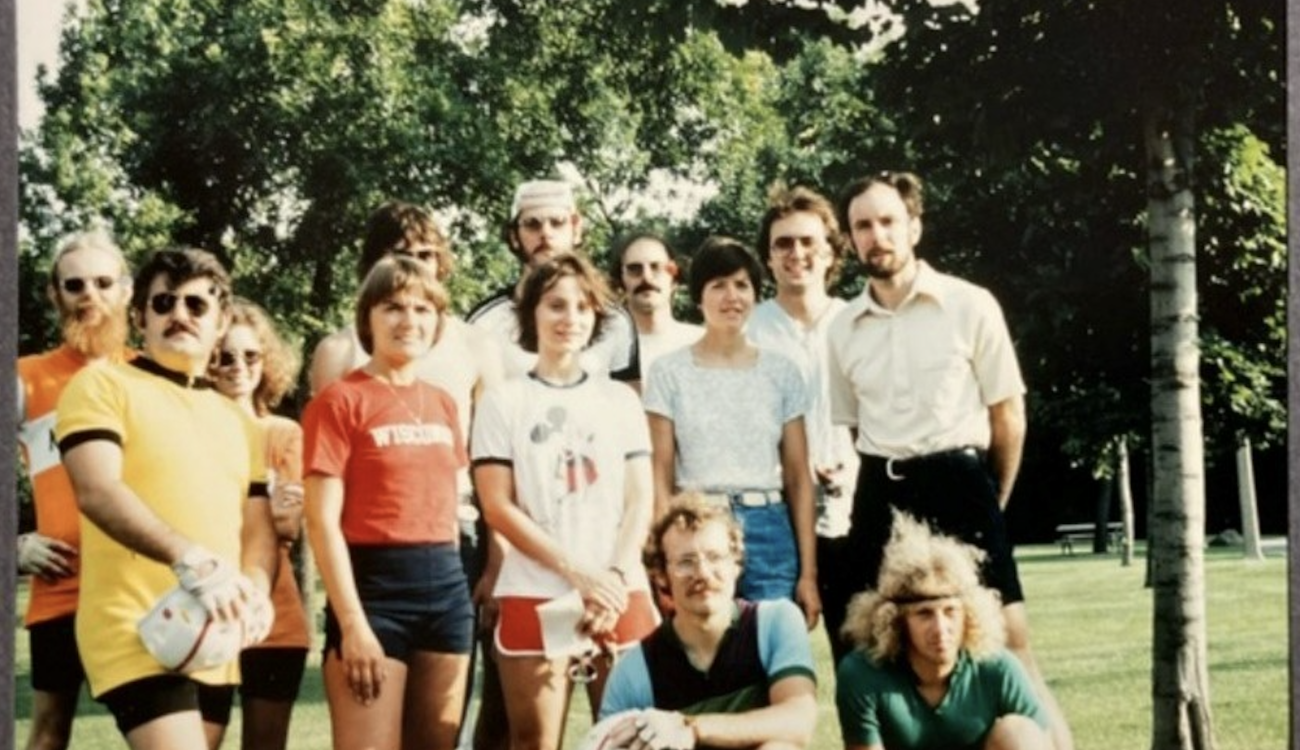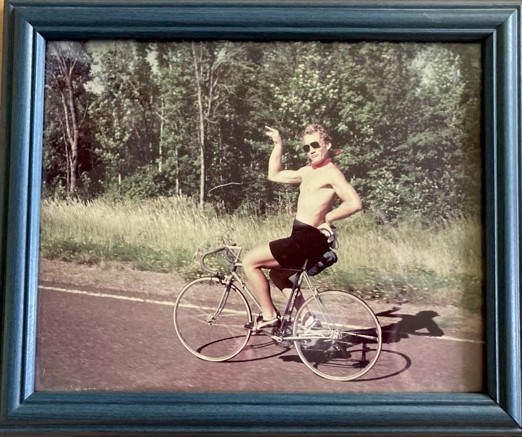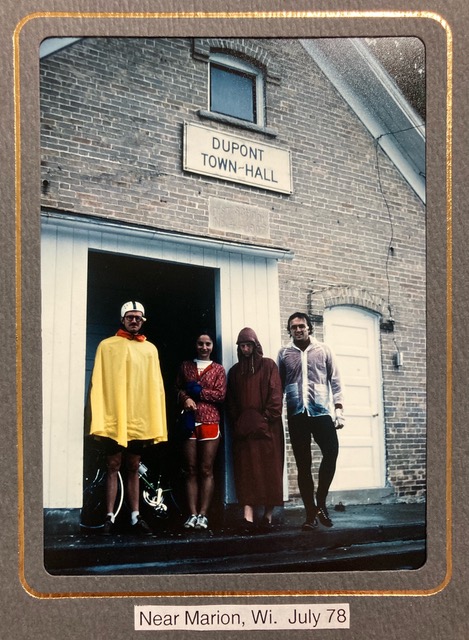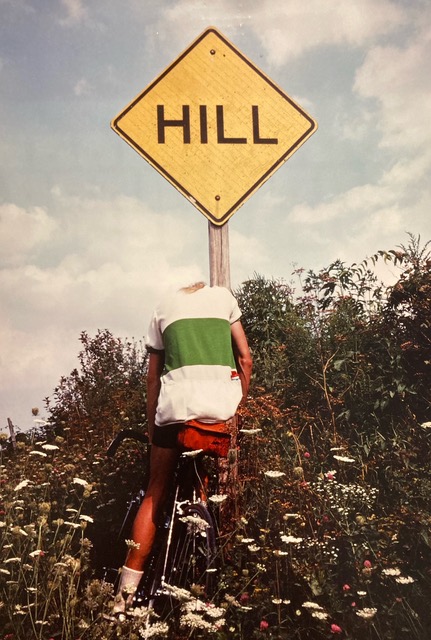
The 1978 Wisconsin Millennium: 15 days and 1500 Miles: A short view of distance riding and bike culture of the 70’s
For five years, 1975-1979 a group of 16 guys and gals decided to circumnavigate Wisconsin on bikes, the challenge being to fit it into most of our two week vacation time. That meant more or less hitting the 100 mile mark every day but the vagaries due to camping spots pushed us to 125 miles some days and only 90 on others.
Reflections courtesy of Bike Fed friend, Martin Zens
If you REALLY want to get into condition for Ride Across Wisconsin (RAW), and if you’re doing the route in two days, the thought of doing back-to-back long efforts will go a long way in your training. Plan once or twice going 80-100 miles day one and come right back the next morning and mentally, yes, I repeat, mentally with the focus being to get through another 80-100, Your body will do it, it’s primarily a matter of training your mind. This effort will bring you to August 20 with a LOT of confidence. Neither day needs to be major hard efforts, just ride and have fun. Take a friend. Go on flat roads. The point is back-to-back long days, long hours. If you do this once or twice before August 20 be sure to have an off weekend between them where you go short—especially if you’re somewhat new to 100 milers. One can get “flat” or exhausted if the miles are too compressed, remember—this is supposed to be fun.

A word about how good we have it today with the fantastic components, frames and clothing accessible. Witness me August, 1978 on my blue French Follis (a fantastic smooth ride from the Reynolds 531 tubing and 36 hole tubular tires). No helmet (the only helmets in those days were the Bell Tourlite, minimal if any ventilation and just difficult to be in. Riding shorts (yes, shorts—bibs were 10 years in the offing). The layer in the shorts between you and the wool (no “spandex”—this came into being in the early 80’s), was deer skin—real chamois skin. When washed (by hand, you’d NEVER put your Italian wool shorts in the washing machine), the chamois would dry hard. Chamois “fat” was used to soften the deer skin back into form. It worked pretty well but over long rides it would stick to your bottom especially in areas you needed to apply a lot of fat to soften a spot. Certainly not a non-microbial product and while at times it could be quite comfortable the seams could also easily promote saddle sores. The saddles were much wider then so the loads had more surface area and things somehow worked out but no saddle cutouts in those days. Your author, like many in the featured photos, had just two pairs of shorts for 15 days (the pair that was washed in lake water or well pump at the campground) was tied to the top of the 70’s hippie/alternative culture Volkswagen sag wagon and left to dry in the wind and sun—making for an especially crisp chamois to soften up. In the early to mid 80’s “synthetic chamois” made its appearance and gone was the need for chamois fat.

Shoes? The old names Adidas and Puma were in existence and trying to get a toehold on the growing cycling market but the REAL shoes to have were Italian—Detto Pietro or Marisi—soft leather, lace up and cleats which had a simple slit in them to fix to the pedal, no fore-aft adjustment and zero rotation. These were the days of “toe strap” pedals as perhaps you’ve seen—a metal cage for your toes to fit into with a leather band at the arch. Cinch that down all day and most of us were happy to be out of the prison they imposed. But, we were having fun—at day 6 we were all so relaxed that we plain and simple forgot about EVERYTHING. We knew through repeat Millenniums that we could count on day 5 as “Silly Day”—the day we were beyond and released from society. Our normal day-to-day routines were forgotten. We were “out there”, fully oxygenated and endorphins running rampant. The 10 days following were euphoric and floating as we worked our way around Wisconsin on low traveled roads with nary a soul for miles. In fact, it became a thing—day 15 was a Saturday and so, not having much to do Sunday we always made it an even 16 100’s going Milwaukee-Sheboygan (“heck, it’s a flat day” was our motto).

Distracted driving was speeding. We’d never have dreamed our 5-speed bikes would maybe one day be 12 speeds, shifting gears by a lever right at our fingertips on the brake hoods and not on the down tube? Index what? Electronic what? Bluetooth what, you have a blue tooth? Carbon what? Fiber? What’s that? Soft squishy elastomeric handlebar tape vs colored tape the thickness of athletic ankle wrap tape. Jersey pockets that drooped below my saddle with just a candy bar in it—gosh how I wish someone would make a better jersey! If not wearing a jersey then a t-shirt or no top at all for the guys went. Coke and Pepsi as a “sports drink”? (I cut Pepsi 50-50 with water as my primary hydrator in 1987 to win the 223 mile Race Across Wisconsin, La Crosse-Milwaukee). Socks? They were nothing more than what you played basketball or tennis in, nothing form fitting existed. Want to know how far you rode…ride the course in your car (until LeMond with Avocet). Sunscreen—yes, Coppertone and did it ever sting. Chain lube—get out the oil for your lawnmower. Need to change a stem? Remove and hope to save your Velox French tape, remove brake levers, pull bars out of stem remove and reverse the process for the new stem. As long as your headset was accessible you might as well clean and grease the bearings. Today, 4 bolts, some dexterity and you’re done for a stem change.
Kudos to all of the component, clothing and frame manufactures of which TREK has lead the way.